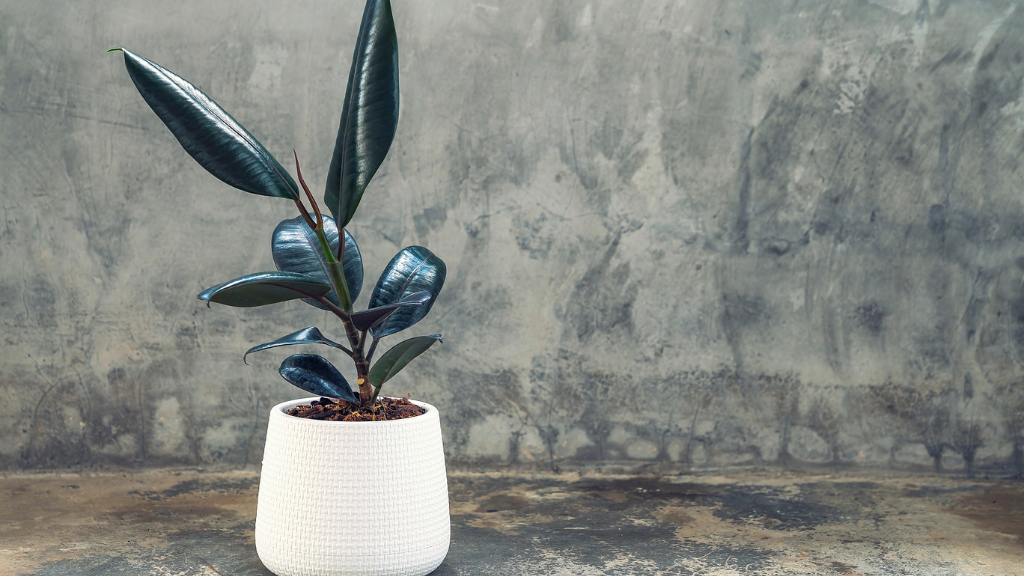Top 10 Questions About Rubber Tree Plants


In the hopes of making it a little easier when it comes to growing plants, Gardening Know How tries to provide the best information possible so your garden will flourish - and that includes answering commonly asked questions that pop up along the way. Houseplants, like the rubber tree plant, are not without their share of problems, or questions. Here are the top 10 questions about rubber trees. 1) What cause leaf drop on rubber trees? Rubber trees are common houseplants in the Ficus genus. Plants in this group are notorious for dropping leaves when any change occurs in their growing situation. These might be lighting, physically moving the plant, more or less water, fertilizer issues, repotting or temperature changes. On occasion, pest or disease issues can cause leaf drop on rubber plants. How do you know which condition is affecting your plant? Think back to any adjustments you have made to the plant's routine. If there are any, amend them to the old ways and wait for improvement. If there are no recent changes, check for infection or pests and combat immediately. 2) How to propagate a rubber plant tree? Rubber tree plants propagate quite easily with cuttings. Go ahead and remove the stem where you want to prune it, but be certain to use clean, sharp pruners to prevent infection getting into the cut site. Your cutting should be at least 6 inches long and taken just below a growth node. Additionally, it should have two sets of leaves. Dip the cut end into rooting hormone to increase the chances of new root formation. Insert the cut end into a prepared hole in your pre-moistened potting mix and firm soil around it, using a stake of some sort to keep the cutting vertical. Place a plastic bag over the pot to conserve moisture and locate the container to a warm, medium light room. In about 2 to 3 weeks, the cutting should produce roots and be ready for transplant, if necessary. 3) How to water rubber plant trees? Rubber plants need an even balance of moisture both in their soil and in the humidity level of the air. If plants are sited near a fan or furnace, soil will dry out quickly. During the plant's growing season, soil must be kept moist. Insert your index finger into soil to the second knuckle and check to see if it is dry. If so, you know it is time to water. Excess moisture can be a problem too. Leaves may droop and turn yellow, often dropping off. Ensure the container the plant is housed in has plenty of open drainage holes and potting medium percolates freely. When rubber plants are dormant, or not actively growing, reduce watering to 1 or 2 times per month. Increase ambient humidity by spraying the leaves or setting the container on a saucer filled with pebbles and some water. Gradual evaporation will increase humidity without bogging up the roots. 4) Can I prune a rubber plant tree? Rubber tree plants do not typically need pruning. You can remove any dead stems or diseased plant material at any time of the year. During late spring or early summer, you can tip prune the plant to promote branching and create a more dense, compact plant. Use clean, sharp cutting tools and cut above a branch node. Wear gloves if you are sensitive to latex, as the plant's sap has this compound. The rule of thumb is to remove no more than one-third of a plant's branches at one time. Unless you have a real Methuselah of a plant, this should not be necessary. Expect some leaf drop due to shock and give the plant some extra TLC after a hard pruning. Recovery should occur by the next spring's flush of growth. 5) How to repot a rubber tree? Repotting houseplants is important every few years or so to prevent root crowding and stunted growth. Rubber tree plants need to have some tight rooting to keep them stable, so a new container just 1 inch larger than the old is sufficient. Use fresh potting soil each time you transplant. Gently loosen the roots from the old container. Watering the day prior to transplant will make this easier. Pry the plant from the container, being careful not to damage the root ball. Loosen the roots a bit so they can spread out in the new pot. Place a few handfuls of potting soil at the bottom of the new container and then center the rubber plant on top. Fill in and around the root ball. Make sure the plant is set at the same depth it was in the original pot. Water in well. 6) Why are the leaves on rubber tree curling? Curling leaves on rubber tree plants are usually indicative of too little water. The best way to check is by inserting your finger into the soil (up to an inch) and see if it feels wet at all. If it's dry, water and, if not, let it be. Other factors that can attribute to leaf curling include leaf or soil contaminants, which can be remedied by wiping down leaves or repotting; low humidity, which misting can help alleviate; and insect pests, which can be treated with neem oil or insecticidal soap spray. 7) How to grow a healthy rubber tree plant? Growing healthy rubber tree plants means providing them with the best care possible. This includes plenty of bright, indirect light and well-draining soil, along with even watering. Soil should be kept somewhat on the moist side during its active growth but not too wet. You should also wait until the soil dries out some before watering the plant again. The best way to check soil moisture is by inserting your finger up to the first knuckle. If it feels wet, you should hold off on giving the plant any water. If it feels dry, however, give it a drink. 8) Can rubber plant trees be planted outside? Rubber trees are only hardy to 30 F. (-1 C.), or USDA zones 10 and 11. If it's colder than that during winter in your area, it's best to grow the plant indoors. However, even in cooler regions, you can move the plant outside for summer, provided you acclimate it slowly to the new conditions. Slowly introduce the plant to a few hours each day of wind, bright light and other new situations. Increase the time over the course of a week. If you are in the correct zone and want to plant the tree in the ground, choose a shady or dappled light location with protection from wind. Amend the soil with liberal amounts of compost and loosen an area twice the size of the plant's root ball. Install your plant at the same soil level it was in its container. Tamp soil around roots and water in well. It is important to keep the soil moist as the tree establishes. 9) Why is my rubber plant tree drooping? There are many reasons a houseplant's foliage might droop. One of the more common is caused by improper drainage in the container. This could be because the drainage holes are clogged or the root mass is too large and is exacerbated by overwatering. Any of these conditions can cause root rot. A quick way to find out if your plant has this disease is to remove it from its container and check the roots. If you see dark, mushy and discolored spots, the roots may be diseased. Wash the roots off and trim away any diseased material. Dip roots in a fungicide and repot in a sterilized container with fresh soil. Watch the plant carefully and follow good care as it recovers. 10) What causes brown spots on rubber tree leaves? Browning of houseplant leaves usually signals a temperature that is too high or direct extreme sun exposure. Think of it as a plant sunburn. Rubber trees are understory plants in their native regions. That means that larger trees generally provide some shading from hot sunlight. Dappled lighting or indirect lighting is best for these plants. If you are growing rubber tree plants in a southern or even western window, think again! Move the plant to a less harsh light exposure and you should see recovery in no time. Additionally, turn the plant every once in a while to expose all sides of the plant to light and prevent one side from getting too much sun. Brown, dead spots on leaves can also be due to a lack of watering or fungus (prevalent in overly moist plants). We all have questions now and then, whether long-time gardeners or those just starting out. So if you have a gardening question, get a gardening answer. We're always here to help.
Sign up for the Gardening Know How newsletter today and receive a free copy of our e-book "How to Grow Delicious Tomatoes".
